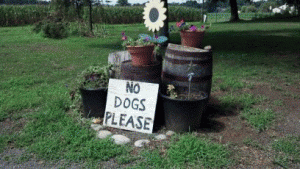 Growers who sell 100% of their product through direct market methods will likely never have to deal with a third party audit, but food safety is a critical component of producing a quality product. Food safety should be a part of every farms risk management plan. If you have not attended training on Good Agricultural Practices (GAPs) and do not yet have a farm food safety plan in place the process can seem overwhelming. Look for future articles on food safety here in the PPA and information on GAPs trainings this fall.
Growers who sell 100% of their product through direct market methods will likely never have to deal with a third party audit, but food safety is a critical component of producing a quality product. Food safety should be a part of every farms risk management plan. If you have not attended training on Good Agricultural Practices (GAPs) and do not yet have a farm food safety plan in place the process can seem overwhelming. Look for future articles on food safety here in the PPA and information on GAPs trainings this fall.
The California spinach E.coli outbreak in 2006 had a substantial effect on NJ spinach growers. It showed that consumers will not purchase a commodity that has been linked to an outbreak, regardless of where that outbreak occurred and of actual risk. Direct market growers have the ability to educate their customers, an advantage when armed with the right answers about farm practices that reduce cross contamination.
This season a series of articles will be written for the PPA focusing on GAPs for direct market growers. Topics will range from restroom facilities to displaying product for sale. The foundation of any farm food safety plan is assessing risk. Below are areas of risk that growers should focus on and how to properly assess risk.
Areas of risk to focus on are:
- Adjacent land (as far as you can see)
- Prior land use
- Farm water use
- Animal activity (wild and domestic)
- Soil Amendments
- Packing house
- Distribution (on farm, market locations, transportation)
How do you assess risk?
- Identify the hazards – Detail the hazards including information about the equipment, substances and processes used and who is involved with completing tasks and the type of training they receive
- Identify the potential risk – who, what, where
- Detail the existing control measures that are in place to reduce risk
- What is the chance of and severity of potential harm? Prioritize the needed control measures that will reduce risk
- Document any changes that you have made to your farm practices/policies as a result of the risk assessment
- Monitor the potential hazard points and review the risk reduction procedures for effectiveness

